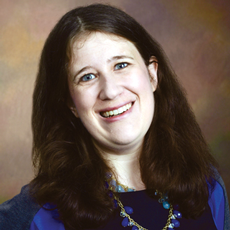
I’m a planner. When we were expecting our child, I researched every aspect of pregnancy, delivery and having a newborn.
But I didn’t expect — and couldn’t have planned for — how often my baby would be sick his first year. Our pediatrician stressed that the first winter is the hardest, especially for babies going to daycare. But my guy also drew a short straw on ear, nose and throat issues. By the time he had racked up three ear infections in 45 days, we couldn’t get ear tubes in him fast enough.
Through all of this, however, both my husband and I were fortunate to have understanding workplaces and some flexibility in our routines. There were lots of bleary-eyed articles written at 10 p.m. this winter (Thanks for your understanding, faithful readers!), and it gave me a whole new level of sympathy for shift-workers at nursing homes who have to be onsite — or else.
That’s where Purdue University’s Basil S. Turner Professor of Management Ellen Ernst Kossek’s research on Work-Life Needs comes in. She makes a convincing case that technology is super when it comes to scheduling, but it’s not enough.
In a recent study, she looked at three main ways facilities approached worker scheduling. In the “Sharing the Pain” method, the facility randomly assigned schedules. With the “Reverse Status Rotation” method, schedulers used an approach where first-line managers were required to fill in for their direct reports who unexpectedly missed part or all of their shifts. That sound you hear is me cringe-laughing as I imagine how unpopular that model was in skilled nursing facilities.
For the “Work-Life Needs” method, however, the organizations took a more improvised approach and experimented with different ways to fill in schedules to balance the needs of the workers with patient coverage. It shouldn’t be a shock this method was the most successful. Kossek and her team’s work appears online in Work and Occupations.
Scheduling “is a social process,” Kossek told me Thursday. “We do need better technology but how we schedule with technology is still within a social system.”
In nursing home culture, there’s such a focus on elders and families that “sometimes employees get left out inadvertently,” she said.
That means when the car breaks down, or a kid is sick, the default is writing up the employee for being late.
But when nursing home schedulers try to problem-solve, there’s a positive ripple effect, Kussek explained.
“That caring culture can carry over to problem solving for patient. They balance that service triangle of patient needs, cost pressures and employee needs. It is a triangle,” she said.
Good nursing homes also aren’t afraid to change. Kussek told me about a nursing home that moved mealtimes 30 minutes later. They found employees were often late due to the local school bus schedule: Every parent of a school-age child has had the panic of a bus not showing, running late or a child missing the bus.
Moving meals “was a win-win, because you weren’t writing people up for being late because of the schoolbus, and patients liked it a little later,” she said.
The solution meant that employees were less stressed, residents were happier and administrators decreased paperwork and improved morale. That’s the type of collaboration where we all benefit.
Follow Senior Editor Elizabeth Newman @TigerELN.



